Dinger's Aviation Pages
NOTE THIS PAGE IS AN ARCHIVE - THE INFORMATION ON IT HAS NOT BEEN UPDATED SINCE 1995
HAWKER SIDDELEY HAWK
Back in 1995 I issued a DOS program on floppy disk called "RAF FASTJETS" which was wriiten using IBM's "LINKWAY" product. All the information on this page is taken from that program, none of the data has been updated since 1995. The photos are from the collection of John Edwards.

The Hawk family of trainers and strike aircraft are one of the great success stories of British industry. The marketplace for jet trainers is very crowded, with almost every nation with an aircraft industry producing a jet trainer of some kind. Against fierce competition, the Hawk has won orders from all over the world.
The Hawk started life as the Hawker-Siddeley P1182 which won the competition for a new advanced trainer for the RAF in 1971. The prototype flew in 1974. It soon started to replace the Gnat and later the Jet Provost in RAF service.
A tandem two-seat trainer with a single non-afterburning version of the Adour turbofan the Hawk delights everyone who flies it. It is fast and manoeuvrable with very good handling qualities. The stepped-up cockpits allow both the instructor and pupil to have a good view ahead. Robust and reliable, the Hawk is a cheap aircraft to run. It has a very good range for a training aircraft allowing long periods of instruction to be undertaken.
The RAFs aerobatic team, the Red Arrows replaced their Gnats with Hawks and their displays show the performance and manoeuvrability of their mounts. Many of the RAFs TMk1 trainers have been upgraded to TMk1A standard able to carry two Sidewinder missiles along with an under-fuselage cannon pod. These aircraft would be used in an emergency for point defence of key targets against any enemy aircraft that got through the Tornado screen. They rely on ground control to warn them of enemy aircraft approaching, having no radar of their own.
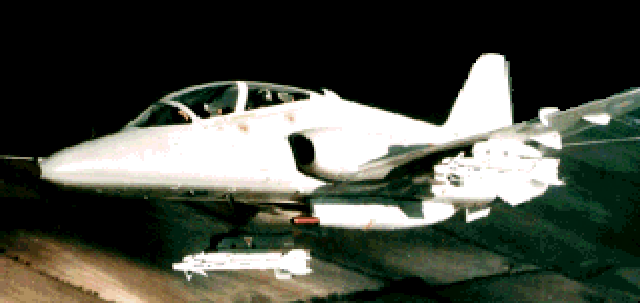
In Partnership with McDonnell Douglas and Sperry, a much-modified version of the Hawk won the competition for a new training aircraft for the US Navy. Called the T-45A Goshawk it has a more powerful Adour engine, a ventral fin with an arrestor hook and a stronger undercarriage for carrier operation. It also has full-span slats and the single under-fuselage air-brake of the Hawk has become two air-brakes on either side of the rear fuselage in the Goshawk. The first Goshawk flight took place in 1988 with its first delivery to the US Navy in January 1992. Seventy-six per cent of the Goshawk is made in the United States.
One of the attractions of the Hawk to small air forces is its ability to carry a fairly large weapons load over a good range at high speed and thus serve as a strike aircraft as well as a training aircraft. Seeing an opening in the market British Aerospace developed the Hawk 200, a single-seat, radar-equipped strike fighter with a redesigned "combat" wing and increased weapons capability including wing-tip rails for air-to-air missiles and two internal cannons. The 200 first flew in 1986. The new wing and other improvements are now offered with the Hawk two-seat trainer, in which guise it is called the Hawk 100.
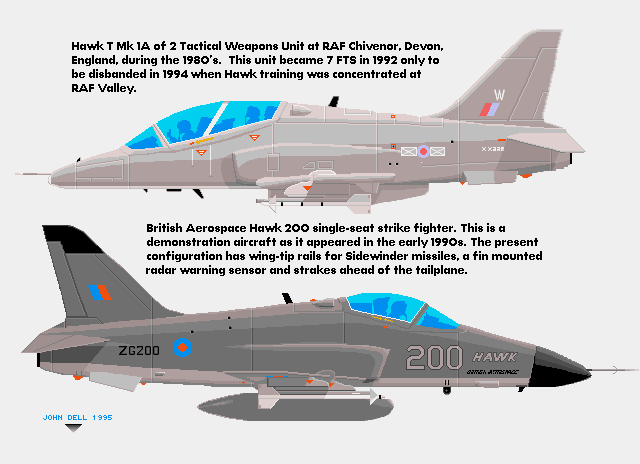
The Hawk 200/100 family are very capable combat aircraft. The Hawk 200 benefits from being able to carry the same radar as the Sea Harrier. This means it can operate as a launch platform for such advanced weapons systems as Sea eagle.
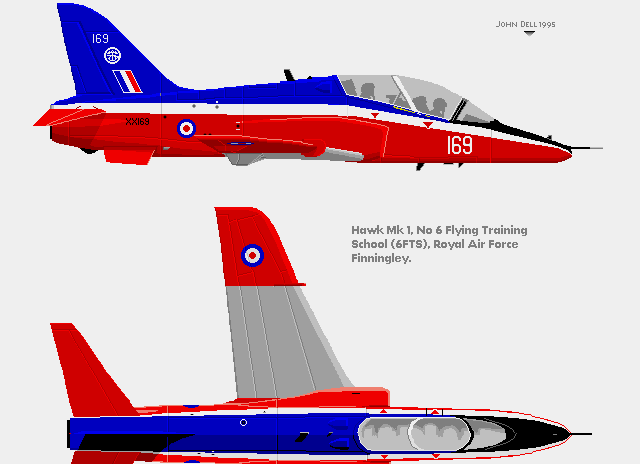
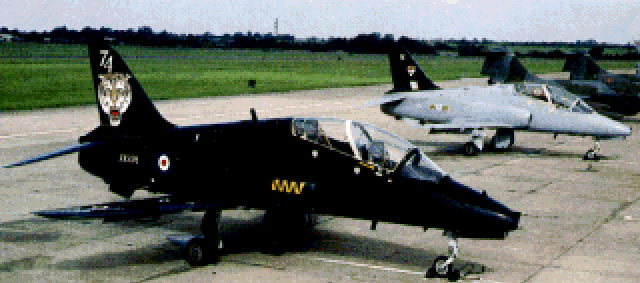
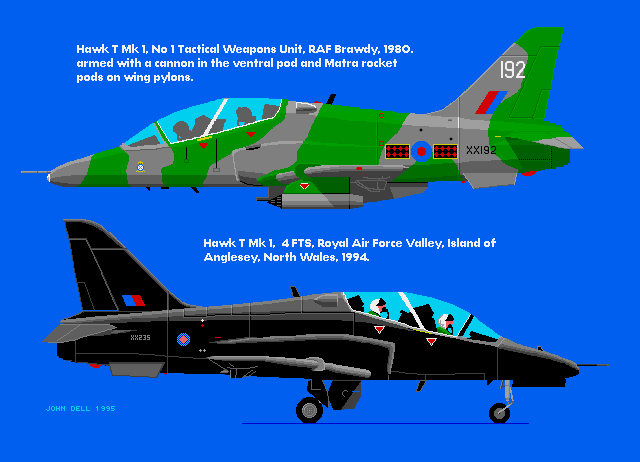

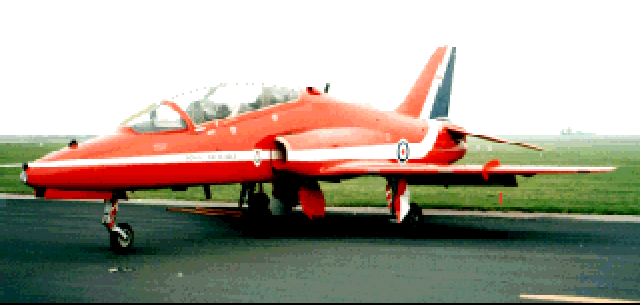

The Hawk Trainer has a top speed of around 620mph (997 km/h) at 8,000 feet falling to 573mph (922 km/h) at 30,000 feet. Ferry range (ie one-way) is 1,150 miles (1850 km) on internal fuel.
The Hawk 200 fighter has a speed of 634 mph (1021 km/h) at sea level. It has a combat radius of 554 miles on internal fuel, and a ferry range of 2244 miles (3610 km) with external fuel tanks.
POWER
HAWK T.Mk1, TMk1A: Powered by Rolls-Royce/Turbomeca Adour 151 turbofan giving 5200 lb (2360 kg) thrust.
GOSHAWK T-45A: Powered by a Rolls-Royce/Turbomeca F405-RR-401 turbofan (Adour Mk871) giving 5840 lb (2649 kg) thrust.
HAWK 100 and 200: Powered by Rolls-Royce/Turbomeca Adour 871 turbofan giving 5845 lb (2651 kg) thrust.
NOTE THIS PAGE IS AN ARCHIVE - THE INFORMATION ABOVE HAS NOT BEEN UPDATED SINCE 1995
Updated info: From 2012 the RAF began operating an upgraded version of the Hawk called the T2. Only 28 Hawk T2s were ordered. The RAF was set to retire all of its T1 Hawks, except for those used by the Rad Arrows Display team, in 2022. However, engine issues with the T2's Ardour Mk951 engine have cut back on the types availability, severly disrupting the RAF's ability to train pilots. Story on the <Key Aero> website.
